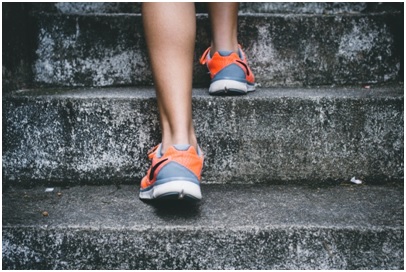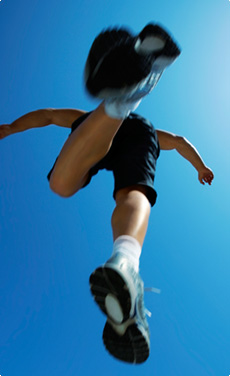Ten ways running can benefit those with Cerebral Palsy

Many people believe that those with cerebral palsy can’t run because of their condition. Well, in actual fact, they can, and the benefits are numerous as identified below.
There has been a big push in recent years to get people with cerebral palsy (CP) into sport so they can get the exercise they need. That said, disadvantaged families may be unable to afford signing their child up for numerous sporting activities.
There are measures in place to support families in this position, and many parents are able to claim compensation for a child with cerebral palsy to pay for rehabilitation and accessibility measures. This compensation also helps to pay for sports equipment to help with keeping your child active.
That said, running is a potential option for those with CP that doesn’t cost the world! Today, we’re going to give you a quick description of what cerebral palsy is, and then explain how people with the condition are able to run. We’ll then close off with 10 ways running can benefit someone with cerebral palsy.
What is Cerebral Palsy?
Before we get into whether people can run with the condition, it’s a good idea to outline what the condition is so you have an idea of why running might be difficult.
Cerebral palsyis the name for a collection of lifelong conditions affecting movement and co-ordination. It’s caused by issues before, during or soon after birth.

Symptoms of Cerebral Palsy
The symptoms of cerebral palsy aren’t obvious until the first 2 or 3 years of a child’s life, but once they reach that age you might notice:
· Slow development:not reaching their milestones, such as sitting by eight months or walking by 18 months.
· Posture issues:the child might seem either too stiff or too fllexible.
· Weak arms or legs: they may not be able to move their limbs, or pick items up easily.
· Movement issues:random or uncontrolled movements.
· Walking on tiptoes: this will only become apparent when they begin to walk, so this can take months after birth.
· Other issues:such as with swallowing, speaking, vision and learning.
Types of Cerebral Palsy
Once the child has been diagnosed with cerebral palsy, they will likely be categorised as a specific type based on their symptoms. The different types of cerebral palsy are:
· Spastic cerebral palsy:the sufferer has stiff and tight muscles, which make it difficult to move and reduce their range of movement.
· Dyskinetic cerebral palsy:the muscles switch back and forth between stiff and floppy, which causes uncontrolled movements and spasms.
· Axatic cerebral palsy:the individual has balance and coordination problems, making them clumsy and shaky.
· Mixed cerebral palsy:the person has symptoms across multiple types of cerebral palsy.
Outside of the symptoms and types, there are also terms that refer to how affected the body is by the condition. Hemiplegia means one side of the body is affected, diplegia is 2 limbs, monoplegia is one limb, and quadriplegia is all four limbs and usually the whole body as well.
Can People Run with Cerebral Palsy?
Based on the symptoms and types we laid out in the above section, it seems like it might be quite difficult for someone with cerebral palsy to run.
In fact, there are loads of people with the condition who can run, and there are even entire sports created specifically for people with cerebral palsy. As long as the person with the condition can walk, they should be able to run if they put their mind to it.
A Case Study
In a study from 1998, the authors compared 19 children with spastic-diplegic cerebral palsy to 15 children without in walking and running activities. They found that the majority of the children with cerebral palsy who could walk could also run.
The running was less efficient than the group of 15 children without cerebral palsy, but the transfer of energy between adjacent joints was comparable and the power still came from the hips. This means there shouldn’t be any additional pressure on joints from running for those with the condition.
It is recommended that runners with cerebral palsy buy good running shoes to alleviate joint pressure and increase the amount of running slowly over time. Staying at the same pace until they can run 30 or 40 minutes at a time is a good baseline before they decide to increase their speed.
If it’s the person’s first time running, they should speak to their physiotherapist or physician first to make sure it’s safe.
10 Ways Running Can Benefit People with Cerebral Palsy
Now that we have an idea of what cerebral palsy is and whether people with the condition are able to run, it’s time to talk about the ways in which running can be beneficial to them.
1. Cardiorespiratory fitness
Children and adults with cerebral palsy have difficulty performing physical movements without expelling huge amounts of energy. In fact, people with cerebral palsy expend 2 to 3 times as much energyas those without disabilities, making them tire much sooner.
But, studies on both aerobic and anaerobic exercise in people with cerebral palsy have shown significant increases in their lung capacity, agility, lower limb muscle strength and athletic competence.This means that people with cerebral palsy who perform aerobic and anaerobic exercise, such as running, are more able to use their body’s energy efficiently and perform tasks with reduced fatigue.
2. Bone structure and strength
Individuals with cerebral palsy have a greater risk of being inactive, which can lead to osteoporosis. This makes them more susceptible to bone fractures, stiff joints, poor balance, and violent seizures.
Participating in physical activities, like running, can reduce skeletal fragility and susceptibility to fractures. This is one reason why it’s important to get someone with cerebral palsy to exercise in childhood and stave off any bone density issues as soon as possible.
3. It takes their mind off body image
This is especially true for teenagers with cerebral palsy, but can apply to adults as well. Adolescent teens have a well-established perception of body image due to social media, TV and magazines.
In a study, teenagers with cerebral palsy were asked what parts of their body they liked the least, and again once they’d undergone an exercise regime. Pre-exercise they listed their arms, legs, surgical scars and excess adipose tissue. Post-exercise, their viewpoint shifted to behaviours such as smoking, drinking, and nail biting.
This shows that physical exercise can actually take teenagers, and adults, minds off issues with their own bodies and onto unwanted behaviours instead.
4. Muscle strength and endurance
People with cerebral palsy tend to have reduced muscle strength and endurance. Most of the training to improve strength and endurance involves lifting and carrying weights, but there are benefits to be had from running as well.
Research has shown that strength is directly related to motor functions, and that strengthening programs focusing on the lower limbs can improve the ability to walk. Ergo, running, which focuses on strengthening your legs, can improve their ability to walk.
5. Psychological benefits
Taking part in regular exercise and physical activities can improve well-being and self-esteem. It can also help keep thinking, learning and judgement skills sharp. There are also studies that show physical exercise can reduce the risk of depression, help with sleep, and enhance the feel-good factor.

6. Socialisation
Running isn’t always a solo activity and can be done with other people who also have cerebral palsy. Attending a racing event or joining a running club can help a person with CP meet new friends who have a common interest with them.
7. Maintain a healthy weight
Performing aerobic exercises like running are good for maintaining body weight, whether you have cerebral palsy or not. If aerobic exercise is performed three to four times a week, a person with cerebral palsy will achieve their optimal result.
8. Reduces risk of diabetes
If you have cerebral palsy, the last thing you need is to get diabetes as well. That said, running can actually reduce your chance of developing the condition.Regular exercise and keeping a healthy weight lowers your risk of developing type-2 diabetes by as much as 50 percent.
9. Reduces risk of heart disease
Running not only reduces the risk of getting diabetes, but also heart disease. When you perform aerobic exercise your risk of developing heart disease reduces by 35 percent.
10. Keeps your brain healthy
When you run, your circulation improves, and that includes circulation to your brain. With increased brain circulation, your risk for dementia and stroke falls and concentration, memory and motivation sharpen.
Should I Start Running?
Today, we’ve covered what cerebral palsy is, how some people are able to run if they have cerebral palsy, and provided 10 reasons why people with the condition should run if they can.
Getting exercise is one of the best ways to protect our bodies and keep our minds sharp. If you have cerebral palsy, this is all the more important because it’s easier for your body to deteriorate than the average person, and exercise is that much more beneficial as a result.
Running costs you nothing but a pair of trainers and a bit of personal dedication. So, it’s the perfect exercise to take up if you can. Thanks for reading this post, and good luck with the exercise!
